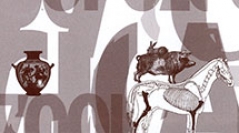

 Anthropozoologica
44 (2) - Pages 35-56
Anthropozoologica
44 (2) - Pages 35-56The present article studies the place of the chicken within the changing environment of late-medieval England. First, it looks at the seigniorial sector of chicken farming, in terms of size of stocks, patterns of disposal and scale of consumption. It then explores the patchy data regarding the peasant sector. The study shows that overall patterns differed between the pre- and post-Black Death periods. After the pestilence, chicken husbandry started shifting from the demesne to the peasant sector of agriculture. The post-1350 changes reflect larger processes, which occurred in late-medieval society, economy and environment.
Poultry, chickens, capons, eggs, demesne, peasants, the Black Death, food.